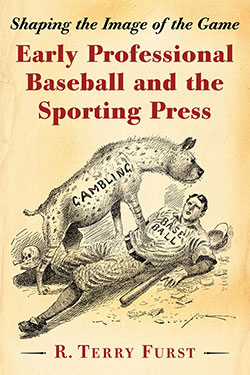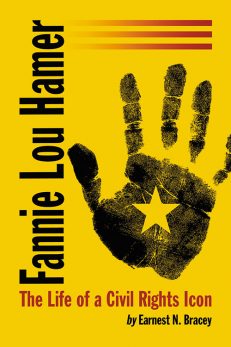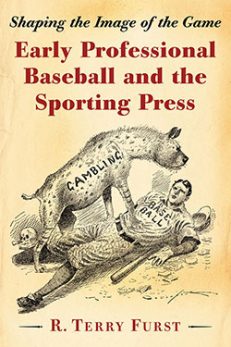Early Professional Baseball and the Sporting Press
Shaping the Image of the Game
$35.00
In stock
About the Book
The book analyzes the process by which the collective image of professional baseball was formed. It traces both the negation and the affirmation of ideas in the sports press that would impede or promote the growth of baseball from a recreational pastime to a team sport spectacle in the mid–19th century. The American collective image grew as a result of sports reportage, conversations about baseball in social and work groupings, game attendance (and changing values toward work and play), and reports of gambling.
Newspaper editorials and news stories and letters to the editor are studied as to shifting and complex and inter-related sentiments toward playing baseball. Much of this interactive complex was influenced by the English sports ideal and newly formed attitudes toward recreation. Above all, the sports press was the primary shaper of the image of professional baseball.
About the Author(s)
Bibliographic Details
R. Terry Furst
Format: softcover (6 x 9)
Pages: 184
Bibliographic Info: 16 photos, notes, bibliography, index
Copyright Date: 2014
pISBN: 978-0-7864-6985-7
eISBN: 978-1-4766-0625-5
Imprint: McFarland
Table of Contents
Table of Contents
Introduction 1
I. Changing Views Toward Man, Recreation, Leisure and Health 9
Muscular Christianity and the Y.M.C.A. 15
Periodicals, Sport Magazines, Newspapers and the
Dissemination of Ideas About Physical Fitness 17
II. The Amateur Ideal in Baseball 23
The Rise of Sportsmanship in England 23
Social Class, Status and Amateurism in England 26
The Amateur Rower in England 27
The Amateur Rower in America 28
The Influence of the English on American Sport 30
III. The Origin of Baseball and the Early Years of the Knickerbocker Base Ball Club 34
The Abner Doubleday Myth 41
The North American Indian and the Origin of Baseball 42
The Origin and Structure of the Knickerbocker Base Ball Club 43
Baseball Clubs Before and After the Knickerbockers 53
The First Convention and the First Association of Baseball Players 56
IV. Positive Press 60
Well-Publicized Events in the Early History of Baseball 62
Recognition and Acclaim of the Skill of Baseball Players and Adoption of the Fly Rule 66
V. The Baseball Public and the Spectacle of Baseball 74
The Public 75
The Baseball Consumer 76
Composition of the Baseball Public 77
The Baseball Public and the Press 80
The Baseball Spectacle and Rule Changes 82
Baseball Strategies 84
The Appeal of Baseball 85
The Rowdy Behavior of the Baseball Audience 87
Club Rivalries 89
VI. The Disreputable Image of Baseball 93
Professional Athletics of the Early Nineteenth Century 93
Substitution and Revolving: Disreputable Practices in the Transformation of Baseball 97
Gambling and Corruption in Baseball 99
The Championship of Baseball: The Quest for Supremacy 106
The Impact of the Championship on Baseball 110
The Moral Image of Baseball 110
African Americans in Baseball: The Early Years 111
VII. Compensation and Image in Professional Baseball 115
Precursor of Direct Payment to Players: The “Benefit Match” 115
Admission Charges and Sharing of Gate Receipts 119
Sinecures: An Indirect Form of Player Compensation 121
The Adoption of the Rule Prohibiting Compensation to Players 122
Some Issues Surrounding Salaries 123
Player Compensation, Socio-Occupational Background and the Professionalization of Baseball 126
The Cincinnati Red Stocking Team of 1869–70 129
Player Compensation and the Image of Professional Baseball 132
The 1870s: A Time for Decisions in Organized Baseball 134
Attempts by the Press to Define the Terms Amateur and Professional 136
The Image of Professional Baseball 139
Chapter Notes 145
Bibliography 161
Index 167
Book Reviews & Awards
“Furst does an excellent job of using press accounts as a window into how the public embraced the game, despite its rebukes of practices that endangered baseball’s integrity. The book should be of interest not only to baseball history enthusiasts but also to those interested in the history of sports journalism”—Nine.





